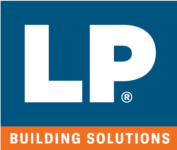LP Building Solutions Streamlines and Optimizes Warranty Management Operations With Syncron


LP Building Solutions, a leading American manufacturer of high-performance building products, has implemented Syncron Warranty to streamline claims processing, maximize operational efficiency and enhance the customer experience. Aligning with LP’s mission to provide its clients with innovative, sustainable and high-quality products, Syncron Warranty seamlessly connects LP with its customers, dealers and suppliers to transform its warranty operations into a cohesive, efficient experience that drives brand loyalty.
LP and Syncron: Building a better world
A leader in worldwide manufacturing warranty and service contract management applications, Syncron Warranty has transformed LP’s warranty operations with an intelligent, streamlined claims processing platform. Syncron empowers LP to deliver on its promise of delivering high-quality products and insisting on excellence. As LP moves forward in its journey with Syncron, the company will continue experiencing the far-reaching advantages of a connected, comprehensive warranty management system.
Syncron Warranty is an essential component of the Syncron SLM Platform, an AI- and ML-driven platform that helps manufacturers and service organizations transform their approach to service lifecycle management (SLM) from beginning to end.
Challenges
- Lack of efficiency causing workflow disruptions
- Minimal reporting capabilities
- No centralized view of warranty claims management
- Insufficient functionality
- Increased warranty costs
Results
- Streamlined claims processing that reduces costs and drives brand loyalty
- Immediate access to actionable analytics,insights and relevant data
- End-to-end, connected claims management
- An intuitive, purpose-built platform connecting all warranty processes
- Reduced warranty costs by 15% in the first year of implementation

